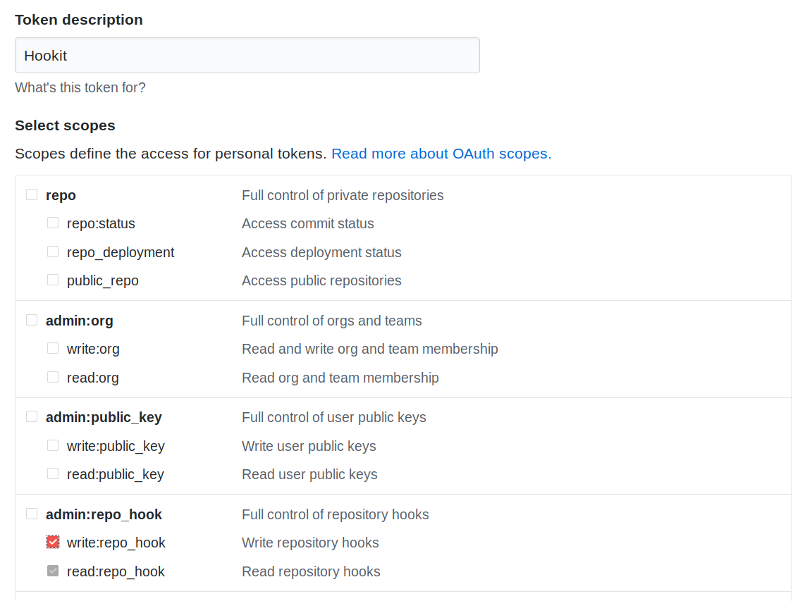hookit
 hookit copied to clipboard
hookit copied to clipboard
WebHooks management and monitoring tool.
Hookit
WebHooks as easy as it can get

Hookit automatically creates and listens to GitHub WebHooks, running a specified command after push events.
- Simple usage - see the example.
- Signated WebHooks by default.
- No dependencies.
Setup
Download and make Hookit Python script available for usage:
$ curl https://raw.githubusercontent.com/MateusZitelli/hookit/master/hookit > /usr/local/bin/hookit; chmod +x /usr/local/bin/hookit
Usage
1. Create GitHub Access Token
Create an access token here with the write:repo_hook scope.

2. Create a configuration file
With the GitHub access token in hands create a configuration file named .env:
GITHUB_ACCESS_TOKEN=<The created Access Token>
REPOSITORY_NAME=Username/Repository
CALLBACK_URL=http://HOST:PORT
HOOK_SECRET=<A hash to be used for validation>
ON_PUSH_CALL=echo "Such a push"
3. Execute Hookit
And then execute Hookit on the folder with the .env file:
$ hookit
Now every push to the repository Username/Repository will trigger the script echo "Such a push".
